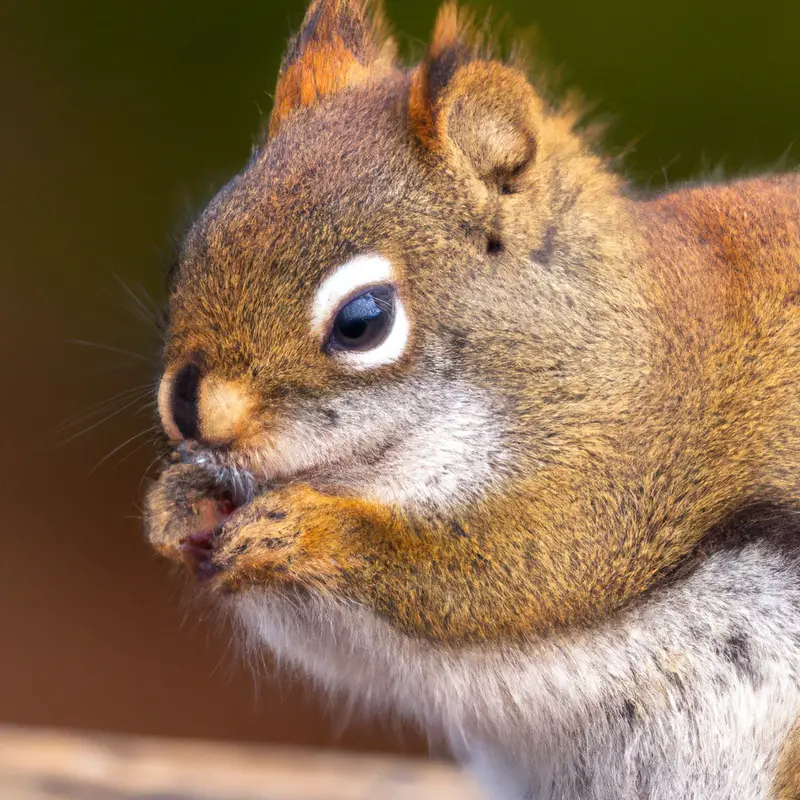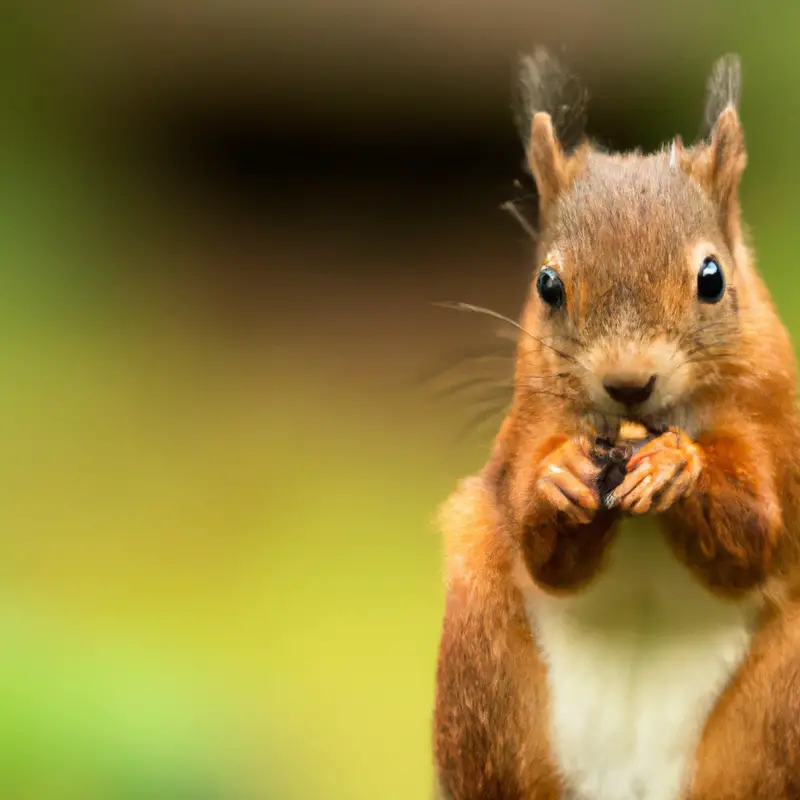Key Takeaways:
- Red squirrel hunting in Alaska offers a thrilling and unique outdoor experience.
- Red squirrel populations in Alaska are abundant, making it a prime destination for hunters.
- Alaska’s vast and diverse landscapes provide a challenging and rewarding environment for squirrel hunting.
- Proper licensing and adherence to hunting regulations are crucial when pursuing red squirrels in Alaska.
Are you an adventurous hunter looking to test your skills in the rugged Alaskan wilderness?
Well, look no further than the thrilling pursuit of hunting red squirrels in the Last Frontier! These elusive and nimble creatures are not only a challenge to hunt but also provide a delectable reward for your efforts.
In this article, I’ll guide you through the natural habitat and physical characteristics of the red squirrel, the hunting seasons and regulations in Alaska, the gear you’ll need for a successful hunt, effective hunting techniques, and some valuable tips for a successful adventure.
Lace up your boots and get ready for an unforgettable experience in the untamed wilderness!
Hunting Method | Advantages | Disadvantages |
|---|---|---|
Spot and Stalk | – Allows for covering large areas of habitat – Provides an opportunity for long-range shooting | – Requires excellent camouflage and stealth skills – Challenging to get close to squirrels |
Calling | – Draws squirrels in close – Can be effective during mating season | – Requires knowledge of squirrel vocalizations – Limited effectiveness outside of mating season |
Tree Stand/Blind | – Provides a concealed vantage point – Allows for patient waiting for squirrels to approach | – Restricted visibility compared to spot and stalk – Requires careful selection of hunting location |
Hunting with Dogs | – Dogs can locate squirrels and flush them out – Can increase hunting efficiency | – Requires trained hunting dogs – Limited effectiveness in dense forested areas |
Red Squirrels in Alaska
Natural Habitat of Red Squirrels in Alaska
Red squirrels, commonly found in Alaska, thrive in a variety of habitats. They prefer coniferous forests, such as spruce and pine, where they can build their nests or dreys.
These nests are often constructed in the forks of trees or in tree cavities.
The dense vegetation provides them with ample cover and protection. Red squirrels are adaptable and can also be found in mountainous regions and tundra areas.
They have a wide distribution across the state, making Alaska a diverse and suitable natural habitat for these fascinating creatures.
Physical Characteristics of Red Squirrels
Red squirrels, commonly found in Alaska, are known for their distinctive physical characteristics. They have reddish-brown fur, bushy tails, and large eyes.
These agile creatures have slender bodies and are smaller in size compared to other squirrel species.
Red squirrels also have sharp claws that help them climb trees with ease. They have excellent vision and a keen sense of hearing, which aids in locating food and detecting potential predators.
With their unique appearance and traits, red squirrels are a fascinating and iconic part of Alaska’s wildlife.

Hunting Seasons and Regulations
Hunting Season for Red Squirrels in Alaska
The hunting season for red squirrels in Alaska typically runs from August to April.
During this time, hunters can pursue these small and agile creatures in designated hunting areas throughout the state.
It’s important to check the specific regulations for the area where you plan to hunt, as there may be restrictions on bag limits, weapons used, and the use of dogs.
Additionally, make sure you have the necessary licenses and permits before heading into the field.
Always prioritize safety and ethical hunting practices to ensure a successful and enjoyable hunting experience.
Licensing and Permit Requirements
In order to hunt red squirrels in Alaska, you must have the appropriate licenses and permits. The specific requirements may vary depending on where you plan to hunt, so it’s important to check with the Alaska Department of Fish and Game for the most up-to-date information.
Generally, you will need a valid Alaska hunting license and a small game hunting permit.
Additionally, there may be restrictions on the number of squirrels you can harvest, so be sure to familiarize yourself with the regulations before heading out into the field.

Choosing the Right Gear
Firearms and Ammunition
When it comes to firearms and ammunition for hunting red squirrels in Alaska, it’s important to choose the right tools. A small caliber rifle like a .22 is ideal for these small animals.
This type of rifle offers accuracy and precision, making it easier to hit your target without damaging the meat.
As for ammunition, using hollow-point bullets can help to minimize damage and maximize humane kills. Remember to always prioritize safety, choose the appropriate caliber for the hunt, and use ammunition that is suitable for small game.

Camouflage and Clothing
When hunting red squirrels in Alaska, camouflage and clothing are essential.
You want to blend into your surroundings and minimize your visibility.
Opt for camouflage patterns that match the terrain you’ll be hunting in.
Choose clothing that is lightweight, durable, and weather-resistant.
Layering is key to staying warm and comfortable.
Don’t forget to wear appropriate footwear that provides good traction.
Additionally, consider wearing a hat or face mask to conceal any exposed skin.
Being mindful of your camouflage and clothing choices will greatly improve your chances of a successful hunt.
Optics and Accessories
Optics and accessories play a key role in enhancing your hunting experience.
A high-quality pair of binoculars will help you spot squirrels from a distance, and a scope can improve your accuracy when aiming.
Make sure to choose optics with good clarity and a suitable magnification for the terrain.
Additionally, consider carrying essential accessories such as a rangefinder, a sturdy tripod, and a comfortable backpack to make your hunting trip more enjoyable and successful.
Don’t forget to bring extra batteries and lens cleaning supplies to keep your gear in top condition.
Hunting Techniques
Scouting and Locating Red Squirrel Populations
Scouting and locating red squirrel populations in Alaska can be a fun and rewarding experience.
One effective method is to look for their dreys, which are nests made of twigs and leaves.
Scan the trees for signs of activity such as chewed bark and scattered pine cones.
Pay attention to areas with an abundance of coniferous trees, as red squirrels prefer them for food and shelter.
Another strategy is to listen for their distinct chatter or rustling noises in the trees.
Stay patient and observant, and you’ll improve your chances of finding these elusive creatures in their natural habitat.
Still Hunting
Still hunting is a popular hunting technique used to stalk and approach game animals stealthily.
When employing this method, you’ll move very slowly and quietly through the hunting area.
The goal is to blend into the surroundings and catch your prey off guard.
Take advantage of natural cover and use slow, deliberate movements to avoid detection.
Keep an eye out for any signs of movement or sound that could indicate the presence of your target.
This method requires patience, discipline, and careful observation skills.
Stay focused and remain alert throughout your hunt.
Calling and Decoying
Calling and decoying are popular techniques used in hunting red squirrels in Alaska.
- Calling involves mimicking the vocalizations of red squirrels to attract their attention and lure them closer. This can be done using various calls, such as distress calls or mating calls.
- Decoying involves using decoys, such as stuffed squirrels or flapping tail devices, to create the illusion of a red squirrel in the area. This can help to attract squirrels and make them more susceptible to being hunted.
Both calling and decoying require practice and patience to be effective. It’s important to research and learn the specific calls and decoying techniques that work best for hunting red squirrels in your area.
Tracking and Stalking
When tracking and stalking red squirrels in Alaska, it’s important to be patient and observant. Start by looking for signs of their presence, such as gnawed pinecones or tracks in the snow.
Follow these signs quietly and slowly, keeping an eye out for any movement or rustling in the trees.
Use natural cover to hide your presence and reduce any noise that might startle the squirrels. Move carefully and silently, using the terrain to your advantage.
Remember to maintain a safe distance and never approach too closely, as these small creatures can be easily spooked.
Happy hunting!
Tips for a Successful Hunt
Proper Shot Placement
Proper shot placement is key to a successful hunt.
When aiming, always target vital organs such as the heart and lungs for a quick and humane kill.
Avoid shooting at nonvital areas like the head, neck, or spine, as these can result in a wounded animal that may suffer unnecessarily.
Remember to consider the angle and distance of your shot, adjusting your aim accordingly.
Practice your accuracy and marksmanship skills to ensure consistent and effective shot placement.
Understanding Squirrel Behavior
Understanding Squirrel Behavior is essential for a successful hunt. Squirrels are active during early morning and late afternoon, so plan your hunt accordingly.
They mainly feed on nuts, seeds, and fruits, so look for areas abundant in these food sources.
Squirrels are agile climbers and use trees as their primary habitat, so focus your search in wooded areas. Pay attention to their vocalizations and tail movements, as they often communicate with each other through sounds and gestures.
Observing their behavior will increase your chances of spotting and tracking them effectively.
Field Dressing and Preparing the Squirrel for Consumption
Field dressing and preparing a squirrel for consumption is a necessary step in hunting.
After harvesting the squirrel, you’ll want to dress it as soon as possible to preserve the meat’s quality.
Start by removing the squirrel’s skin, being careful not to puncture any organs.
Gut the squirrel by making a small incision from the bottom to the rib cage and carefully removing the entrails.
Rinse the cavity with water and pat the squirrel dry.
Finally, you can cook the squirrel according to your preferred recipe.
Enjoy your meal!
Ethical Considerations
Conservation and Sustainability
Conservation and sustainability are important considerations in hunting red squirrels in Alaska. It’s crucial to protect the natural balance of the ecosystem and ensure the long-term survival of the red squirrel population.
By practicing responsible hunting techniques, such as adhering to bag limits and seasons, we can prevent overharvesting and maintain a sustainable population.
Additionally, promoting habitat conservation, such as preserving suitable nesting areas and food sources, is essential for the well-being of the red squirrels and other wildlife. Taking these measures helps to ensure the conservation and sustainability of the red squirrel population in Alaska.
Respecting Private Property and Hunting Regulations
Respecting private property and hunting regulations is essential when engaging in hunting activities. It is important to obtain permission from landowners before hunting on their property, ensuring that you are not trespassing.
Additionally, familiarize yourself with the hunting regulations in the area where you plan to hunt.
This includes understanding bag limits, hunting seasons, and any specific rules or restrictions. By adhering to these guidelines, you show respect for both private property owners and the conservation efforts in place to maintain a healthy ecosystem.
Final Verdict
Hunting red squirrels in Alaska requires an understanding of their natural habitat, physical characteristics, and hunting regulations. To ensure a successful hunt, it is essential to choose the right gear, including firearms, camouflage, and optics.
Hunting techniques such as scouting, still hunting, calling, and stalking can greatly enhance your chances of success.
Remember to properly place your shots and respect ethical considerations, such as conservation and private property. By following these guidelines, you can have a rewarding and sustainable hunting experience in Alaska.








